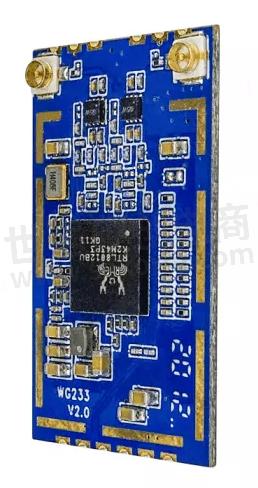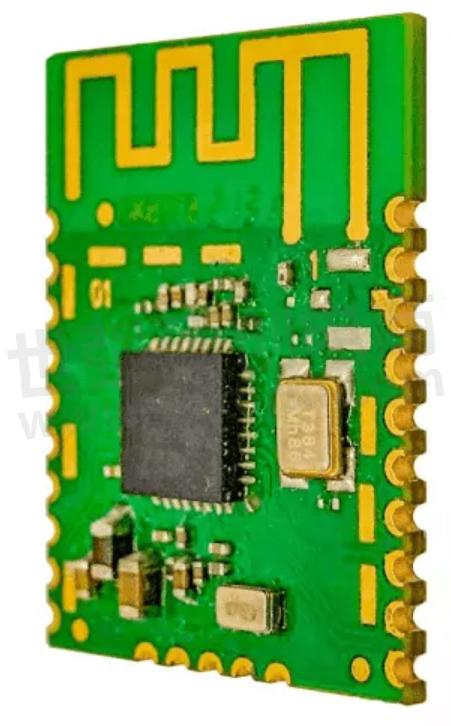Bluetooth Module Datasheet: The Main Uses and Advantages for Industry 4.0

With the aim of Industry 4.0 to facilitate the exchange and traceability of data between machines and users, the Bluetooth module datasheet communication protocol represents one of the most promising solutions in terms of yield, uses, and potential.

So let SKYLAB(天工测控)find out what the Bluetooth module datasheet is and what are the main uses and advantages for Industry 4.0.
What is BLE technology?
Bluetooth Low Energy, also known as Bluetooth Smart or Bluetooth 4.0, is a data transmission technology based on a 2.4GHz radio frequency, capable of connecting compatible devices with each other within a range of about 100 meters.
The band is, therefore, the same is good to use by the standard Bluetooth technology but unlike the latter, the Bluetooth module datasheet standard is optimized through effective connection times of a few milliseconds, unlike Bluetooth which connects for a few seconds, minutes, or even hours.
What are the differences with standard Bluetooth?
Unlike classic Bluetooth, BLE technology, therefore, allows significant energy savings through energy consumption up to 100 times lower. Among the other advantages of this technology, we, therefore, find an increase in battery life, combined with easy installation.
Today, most internet-connected devices use Bluetooth module datasheet Low Energy technology: from consumer items such as heart rate monitors, thermometers, smartwatches, or smartphones, to industrial components such as IoT sensors, position detectors, or LED dimmers.
Applications for Bluetooth
Using Bluetooth Smart in the industrial sector can prove to be the ideal solution to facilitate short-range data transmission: it is possible to install Bluetooth sensors and beacons in the most difficult areas, where the installation of a wired network is not manageable.
In addition to being an economically very viable solution, Bluetooth module datasheet technology allows the sharing and control of data through user-friendly platforms accessible to all users: these are often apps for smartphones. They are easy to download for both iOS and Android.
1. Advantages of Bluetooth Low Energy in Industry
Bluetooth Low Energy technology is easy to integrate into a multitude of Industrial Internet of Things applications and more.
Production: the use of Bluetooth Smart can facilitate the monitoring of industrial production, through wireless BLE sensors capable of detecting data on the progress of the lines, the status of the machines, on any anomalies or failures.
2. Logistics and safety parameters
It is possible to integrate Bluetooth module datasheet devices for the tracking and identification of goods, to record movements within the warehouse, to intercept displacements of location or variations in quantities;
To ensure the safety and health of the workplace, there are different types of Bluetooth Smart sensors. These are capable of monitoring pressure, humidity, temperature, noise, toxicity, and many other environmental parameters.
3. Uses for personnel and medical
The Bluetooth module datasheet integrates into surveillance or GPS tracking systems, in time and attendance systems or authorized personnel, with the management of any notifications from the associated devices;
Lighting: digital light control integrates into LED lighting systems thanks to Bluetooth Low Energy technology. It is capable of communicating with the smartphone and managing the entire lighting system.
The integration between Bluetooth Smart technologies and IoT systems has begun. It is to create new and interesting opportunities for the development of Bluetooth module datasheet devices in the medical field.
Moreover, it is able to help doctors improve patient care and assistance.
4. Home automation:
The increasingly widespread uses of the BLE protocol in smartphones. It allows interaction with the most advanced and intelligent home appliances, coexisting without problems with other protocols such as Wi-Fi.

Bluetooth Low Energy connectivity
May not be a part of your electronic projects yet, but it likely will soon be. This wireless connectivity technology has experienced explosive growth over the past three years and now provides low-power connectivity to millions of electronic devices, such as smartwatches, fitness recorders, smartphone accessories, and medical monitors.
In addition, to the improvements outlined in Bluetooth 4.1, the Bluetooth module datasheet themselves have continued to improve. Thanks to the improvements in efficiency, transmission power consumption in the second generation of BLE will drop by approximately 66% with no loss of range or performance.
The Bluetooth module datasheet Fundamentals
For wireless communication devices that have been optimized for low power consumption rather than maximum data rates, the Bluetooth module datasheet is perfect. It consumes just one-hundredth of the average power required by Bluetooth Classic.
BLE's peak current draw is only 15mA, compared to 40mA or more for Bluetooth Classic. With such low power consumption, BLE can run on a single-button cell battery for months or years. It is depending on the application.
BLE achieves this low power mostly with the radio turned off most of the time. BLE scans only three transmission channels and the radio wakes up only to send or receive short bursts of data.
Bluetooth module datasheet also configures connections very quickly, which further minimizes the operating time of the radio. As for data rates, BLE's practical maximum data rate is typically well under 100 KBS.
Image of a Panasonic coin cell battery
Figure 1: Bluetooth Low Energy devices can run for years on a single coin cell battery.
Other technical features of BLE include:
● Optimized GSFK modulation
Like Bluetooth Classic, BLE makes use of a GSFK modulation scheme. However, BLE uses a higher modulation index and 2 MHz channels for lower bit error rates which result in a larger range.
● Adaptive frequency hopping
Bluetooth module datasheet uses the same adaptive frequency hopping scheme as Bluetooth Classic when devices connect.
BLE also has other technological differences from Bluetooth Classic. Among all, BLE uses a star network topology and a 32-bit access address on each packet for each slave.
This theoretically allows billions of devices to connect simultaneously at all times. The piconet topology of Bluetooth Classic on the other hand only allows up to eight devices at the same time.
● Robustness and Rigid security
Bluetooth module datasheet uses 24-bit CRC (cyclic redundancy checking) on each packet. This allows header and data fields to detect odd-numbered bit errors as well as 2- and 4-bit errors. The 24-bit CRC, compared to the 16 or 32-bit CRC is optimized for the payload of BLE.
BLE encryption and authentication are implemented using the Advanced 128-Bit Encryption System (AES-128), an encryption system developed by the United States government to safeguard data.
- +1 Like
- Add to Favorites
Recommend
- SKYLAB‘s WIFI6 module WG236 supports AP and STA dual role connections
- What are the Functions of the Smart Construction Site Personnel Positioning System?
- How To Choose The Smart Home IoT WiFi Module?
- What Are the Recommendations of SKYLAB UART WiFi Bluetooth Combo Module?
- SKYLAB and MMC developed Long-endurance UAV Power Line Patrol Automatic Solution
- Remote Monitoring and Mobile Access Control Based on WiFi/Bluetooth Technology
- SKYLAB provides UAV Petrochemical Pipeline Inspection Solution
- SKYLAB launched a GPS positioning system solution for Logistics truck GPS Positioning Tracking Application
This document is provided by Sekorm Platform for VIP exclusive service. The copyright is owned by Sekorm. Without authorization, any medias, websites or individual are not allowed to reprint. When authorizing the reprint, the link of www.sekorm.com must be indicated.





























































































































































































































































































































































































































































































































































































































































































































































































































































































